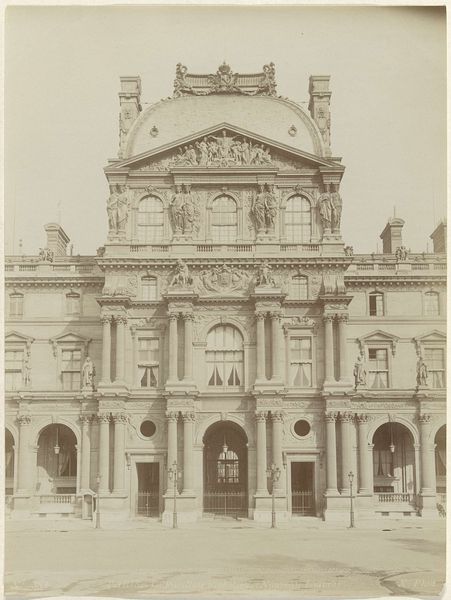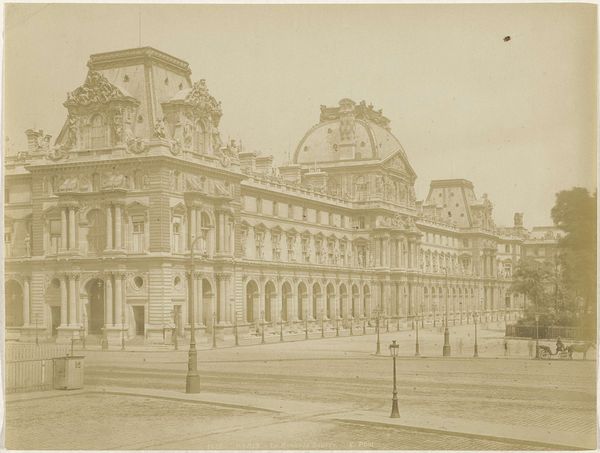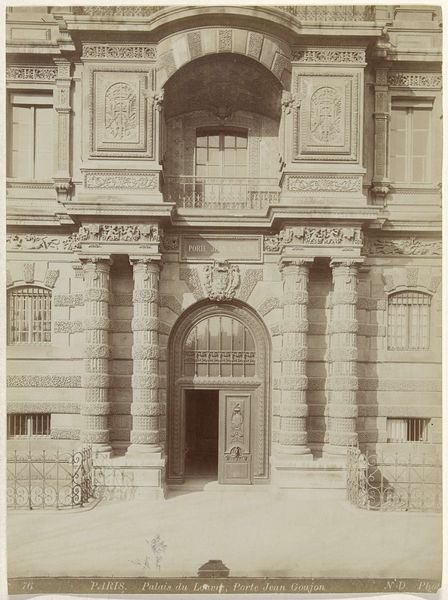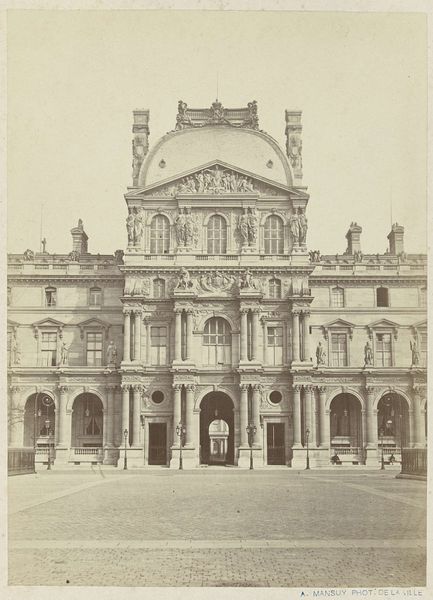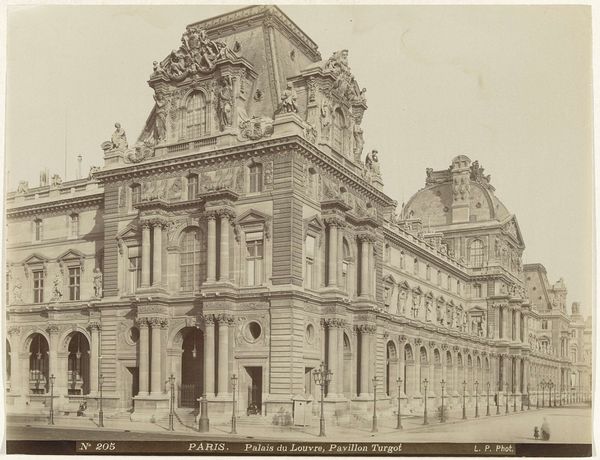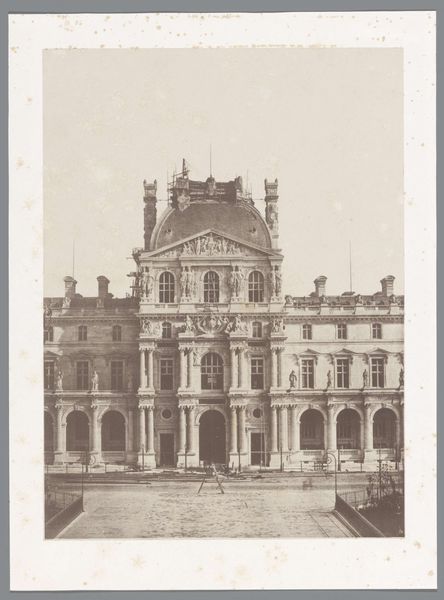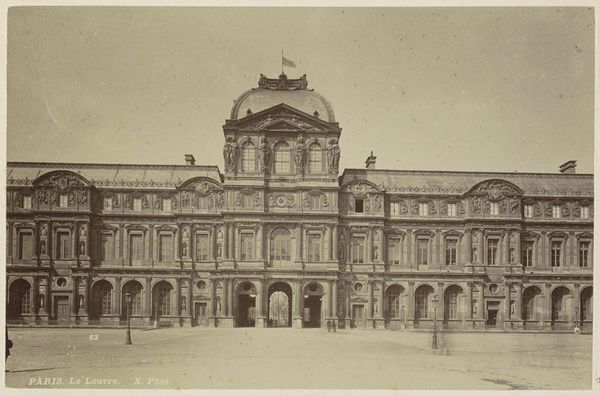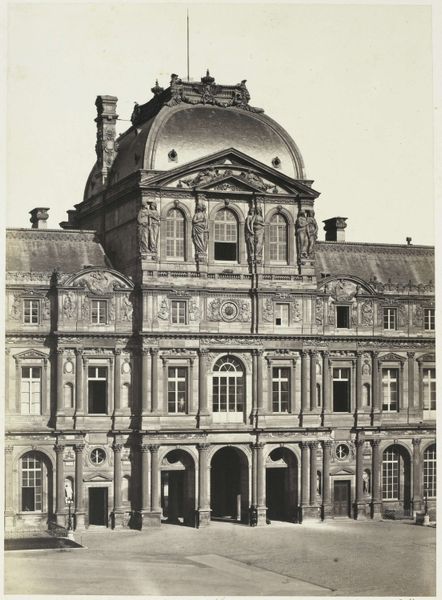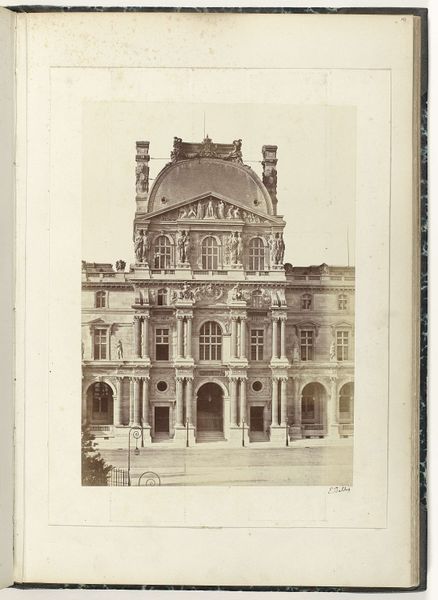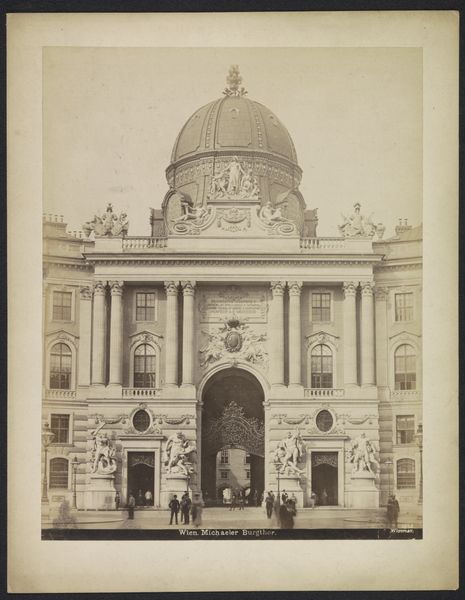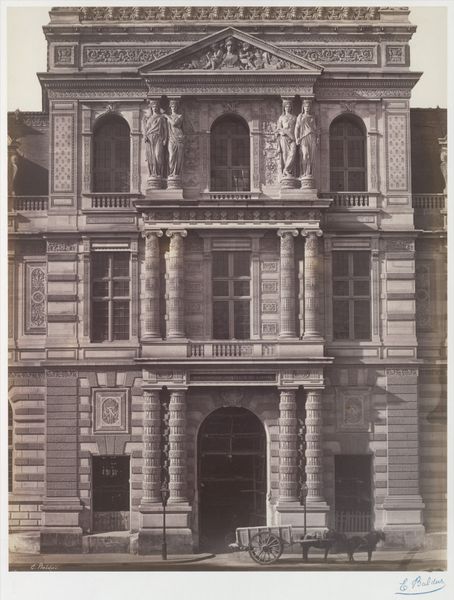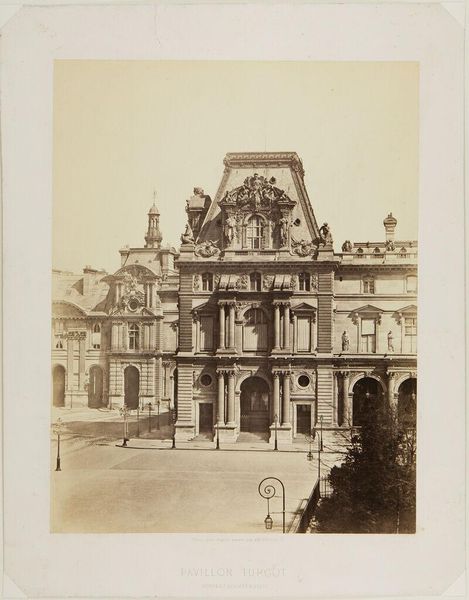
Dimensions: height 272 mm, width 213 mm, height 402 mm, width 306 mm
Copyright: Rijks Museum: Open Domain
Louis Antoine Pamard made this photograph of the Sully Pavilion of the Louvre in Paris, using an albumen print. The Louvre was a palace before it was a museum, and this image presents the museum as an extension of the monarchy; the perspective suggests the building’s imposing scale. The photograph was made in the latter half of the 19th century, a time of great debate about the role of art in society. The Louvre was opened to the public during the French Revolution, but the question of who the museum was for was still being worked out at the time this photograph was made. The photograph suggests the grandeur of French culture and the importance of its preservation in a national museum. To understand this image better, it’s important to study the history of the Louvre, the history of photography, and the changing social role of museums in 19th century France. By doing this, we can see how the meaning of art is always shaped by the social and institutional context in which it is made and viewed.
Comments
No comments
Be the first to comment and join the conversation on the ultimate creative platform.
